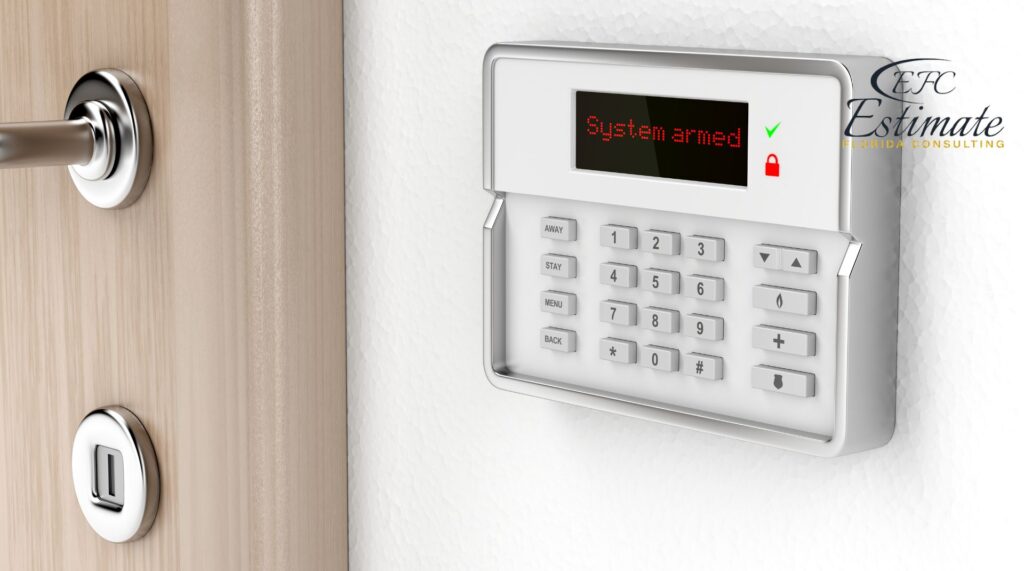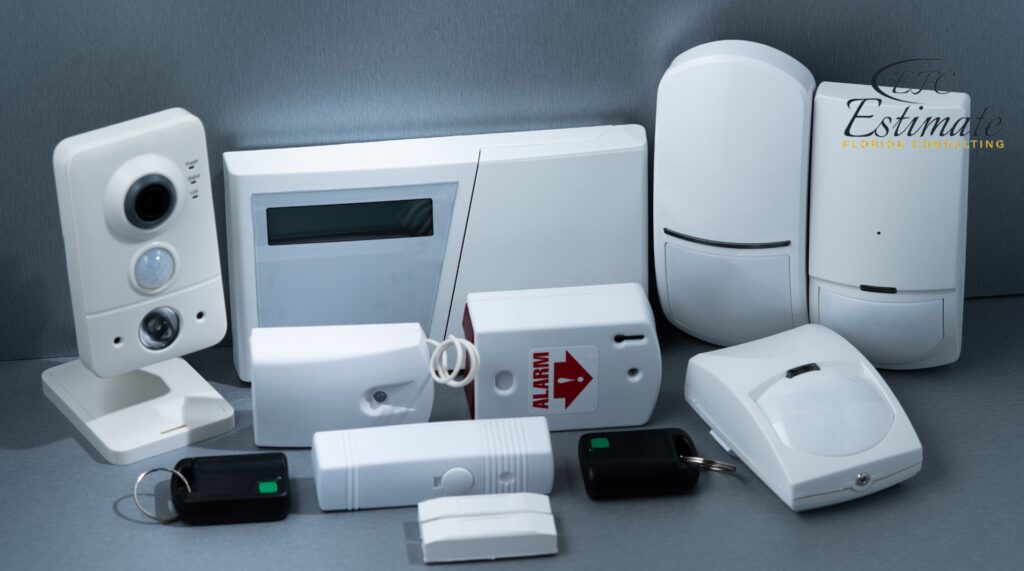What Are the 5 Types of Commercial Fire Alarm Systems?
When it comes to protecting a commercial property, a reliable fire alarm system is one of the most critical components. These systems not only ensure the safety of employees and customers but also protect valuable assets from fire damage. Understanding the different types of commercial fire alarm systems can help you choose the best option for your business. In this blog, we’ll explore the five main types of commercial fire alarm systems, explaining how each one works and their unique benefits. Knowing the specifics of each system will enable you to make an informed decision that aligns with your safety needs and budget.

1. Conventional Fire Alarm Systems
How They Work
Conventional fire alarm systems are one of the oldest types of fire alarm systems. They divide the building into multiple zones, each equipped with detectors and manual call points. When a detector or call point in a particular zone is triggered, the control panel displays which zone the alarm is coming from. Each zone is monitored separately, and the system requires extensive wiring to connect all the detectors and call points to the control panel.
Benefits
- Cost-Effective: Conventional systems are generally less expensive to install and maintain compared to more advanced systems. Their straightforward design keeps initial costs low, making them an attractive option for smaller businesses or those on a tight budget.
- Simple to Use: These systems are straightforward and easy to operate. The control panels are user-friendly, making it easy for building managers to monitor and respond to alarms.
- Ideal for Smaller Buildings: They are perfect for smaller commercial properties where pinpointing the exact location of a fire within a zone is not critical. In such settings, the simplicity and reliability of conventional systems offer adequate protection without unnecessary complexity.
Get 5 New Leads Next 7Days With Our System
- Multi-Family Building
- Hotel Building
- Hospital Building
- Warehouse Building
- High-Rise Building
- Shopping Complex
Considerations
While conventional systems are reliable and cost-effective, they provide limited information about the specific location of the fire within a zone. This can delay the response time in larger or more complex buildings, as responders will need to search the entire zone to locate the fire. The extensive wiring required can also be a drawback in terms of installation time and disruption to the building’s operations.
2. Addressable Fire Alarm Systems
How They Work
Addressable fire alarm systems, also known as intelligent systems, are more advanced than conventional systems. Each device (detector, call point, etc.) has a unique address. When an alarm is triggered, the control panel can identify the exact location of the device that set off the alarm. The system continuously monitors each device, ensuring that all components are functioning correctly and providing real-time data to the control panel.
Benefits
- Precise Location Detection: These systems provide detailed information about the exact location of the fire, which can significantly speed up response times. Knowing the exact point of origin allows emergency responders to target their efforts more effectively, potentially saving lives and minimizing damage.
- Reduced False Alarms: Addressable systems can differentiate between actual fire conditions and false alarms, reducing unnecessary evacuations. This feature is particularly important in environments where false alarms can cause significant disruption and loss of productivity.
- Scalability: They are ideal for larger and more complex buildings, allowing for easy expansion and customization. The modular design of addressable systems means they can be easily upgraded or reconfigured as the needs of the building change.
Considerations
Addressable systems are typically more expensive than conventional systems, both in terms of installation and maintenance. However, their advanced features and precise detection capabilities often justify the higher cost, especially in large or high-risk environments. The complexity of these systems may also require more specialized training for the personnel who monitor and maintain them.
3. Wireless Fire Alarm Systems
How They Work
Wireless fire alarm systems use radio frequency signals to communicate between detectors, call points, and the control panel. This eliminates the need for extensive wiring, making installation quicker and less intrusive. Each component communicates wirelessly with the control panel, ensuring that alerts and status updates are transmitted in real-time.
Benefits
- Flexible Installation: Wireless systems can be installed in buildings where wiring is difficult or impractical, such as historic buildings or temporary structures. This flexibility allows for deployment in a wide range of settings without the need for major structural changes.
- Quick Installation: Without the need for wiring, these systems can be installed quickly, reducing disruption to the business. Faster installation means that buildings can be brought up to safety standards in a shorter timeframe.
- Scalability: Wireless systems can be easily expanded or modified, making them ideal for growing businesses. Additional detectors or call points can be added without the need for extensive new wiring, allowing the system to adapt as the building’s layout or usage changes.
Considerations
Wireless systems can be more expensive upfront than wired systems. Additionally, they require regular battery maintenance to ensure all devices remain functional. However, the flexibility and ease of installation often make them a worthwhile investment, especially in buildings where traditional wiring is not feasible. Regular checks and maintenance are crucial to ensure the reliability of the wireless communication between components.
4. Hybrid Fire Alarm Systems
How They Work
Hybrid fire alarm systems combine both wired and wireless components, offering the best of both worlds. This allows for flexible design and installation, catering to the specific needs of different areas within a building. Wired components can be used in areas where wiring is straightforward, while wireless components can be deployed in more challenging or inaccessible areas.
Benefits
- Versatility: Hybrid systems can be tailored to the unique requirements of various parts of a building, combining the reliability of wired systems with the flexibility of wireless ones. This versatility ensures that every area of the building is adequately protected, regardless of its layout or construction.
- Cost-Effective Upgrades: Existing wired systems can be upgraded with wireless components, reducing the need for complete overhauls. This approach allows for incremental improvements, making it easier to manage costs over time.
- Scalability: These systems are easily expandable and adaptable, making them suitable for buildings of all sizes and complexities. As the needs of the building change, hybrid systems can be reconfigured to provide optimal protection without the need for extensive reinstallation.

Considerations
Hybrid systems require careful planning to ensure compatibility between wired and wireless components. While they can be more complex to design and install, their flexibility and adaptability make them an excellent choice for many commercial properties. Proper planning and coordination are essential to ensure that both wired and wireless components work seamlessly together.
5. Aspirating Smoke Detection Systems (ASD)
How They Work
Aspirating Smoke Detection (ASD) systems are highly sensitive fire detection systems that continuously sample air from different areas of a building through a network of pipes. The air is drawn into a detection chamber where it is analyzed for the presence of smoke particles. These systems are capable of detecting very low levels of smoke, providing early warning of potential fires.
Benefits
- Early Detection: ASD systems can detect fires at a very early stage, even before visible smoke is present, providing the earliest possible warning. Early detection is crucial in preventing small fires from escalating into major incidents.
- Ideal for High-Risk Areas: These systems are perfect for environments where early detection is critical, such as data centers, server rooms, and clean rooms. Protecting these high-value areas from fire damage is essential for maintaining business continuity and preventing significant financial losses.
- High Sensitivity: ASD systems can detect very low levels of smoke, making them highly effective in protecting valuable or sensitive equipment. The high sensitivity of these systems ensures that even the smallest fire risks are detected and addressed promptly.
Considerations
ASD systems are generally more expensive to install and maintain compared to other types of fire alarm systems. However, their ability to provide the earliest possible warning makes them invaluable in high-risk or high-value environments. The advanced technology and sensitivity of ASD systems require specialized maintenance and calibration to ensure optimal performance.
Download Template For Fire Safety Project Breakdown
- Materials list updated to the zip code
- Fast delivery
- Data base of general contractors and sub-contractors
- Local estimators

Conclusion
Choosing the right fire alarm system for your commercial property is crucial for ensuring safety and compliance with fire safety regulations. Conventional, addressable, wireless, hybrid, and aspirating smoke detection systems each offer unique benefits suited to different types of buildings and needs. Assessing the specific requirements of your property and consulting with fire safety professionals can help you determine the best system for your business. Investing in a reliable fire alarm system not only protects lives and property but also provides peace of mind, knowing that your business is prepared for any fire emergency. Whether you need a simple and cost-effective solution or a highly advanced system with early detection capabilities, there is a fire alarm system that will meet your needs and budget.
FAQs
A reliable fire alarm system is crucial for protecting a commercial property. It ensures the safety of employees and customers and protects valuable assets from fire damage. Understanding different types of commercial fire alarm systems helps in choosing the best option for your business.
Conventional fire alarm systems are one of the oldest types of fire alarm systems. They divide the building into multiple zones, each equipped with detectors and manual call points. When a detector or call point in a zone is triggered, the control panel displays which zone the alarm is coming from. Each zone is monitored separately, requiring extensive wiring to connect all components to the control panel.
- Cost-Effective: Generally less expensive to install and maintain.
- Simple to Use: User-friendly control panels make monitoring and responding to alarms easy.
- Ideal for Smaller Buildings: Suitable for smaller commercial properties where pinpointing the exact fire location within a zone is not critical.
While reliable and cost-effective, conventional systems provide limited information about the specific fire location within a zone. This can delay response time in larger buildings. The extensive wiring required can also be a drawback in terms of installation time and disruption to operations.
Addressable fire alarm systems, or intelligent systems, are more advanced than conventional ones. Each device (detector, call point, etc.) has a unique address. When an alarm is triggered, the control panel identifies the exact location of the device that set off the alarm. The system continuously monitors each device, providing real-time data to the control panel.
- Precise Location Detection: Provides detailed information about the exact fire location, speeding up response times.
- Reduced False Alarms: Can differentiate between actual fire conditions and false alarms, reducing unnecessary evacuations.
- Scalability: Ideal for larger buildings, allowing for easy expansion and customization.
Addressable systems are typically more expensive than conventional ones, both in installation and maintenance. Their complexity may also require more specialized training for personnel.
Wireless fire alarm systems use radio frequency signals to communicate between detectors, call points, and the control panel, eliminating the need for extensive wiring. Each component communicates wirelessly with the control panel, ensuring real-time alerts and status updates.
Google Reviews



Process To Get Warehouse Fire Sprinkler System Cost Estimate Report
Here I am going to share some steps to get warehouse fire sprinkler system cost estimate report.
-
You need to send your plan to us.
You can send us your plan on info@estimatorflorida.com
-
You receive a quote for your project.
Before starting your project, we send you a quote for your service. That quote will have detailed information about your project. Here you will get information about the size, difficulty, complexity and bid date when determining pricing.
-
Get Estimate Report
Our team will takeoff and estimate your project. When we deliver you’ll receive a PDF and an Excel file of your estimate. We can also offer construction lead generation services for the jobs you’d like to pursue further.

